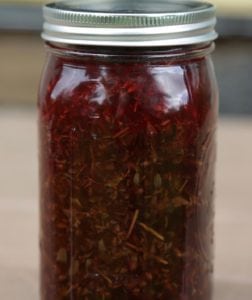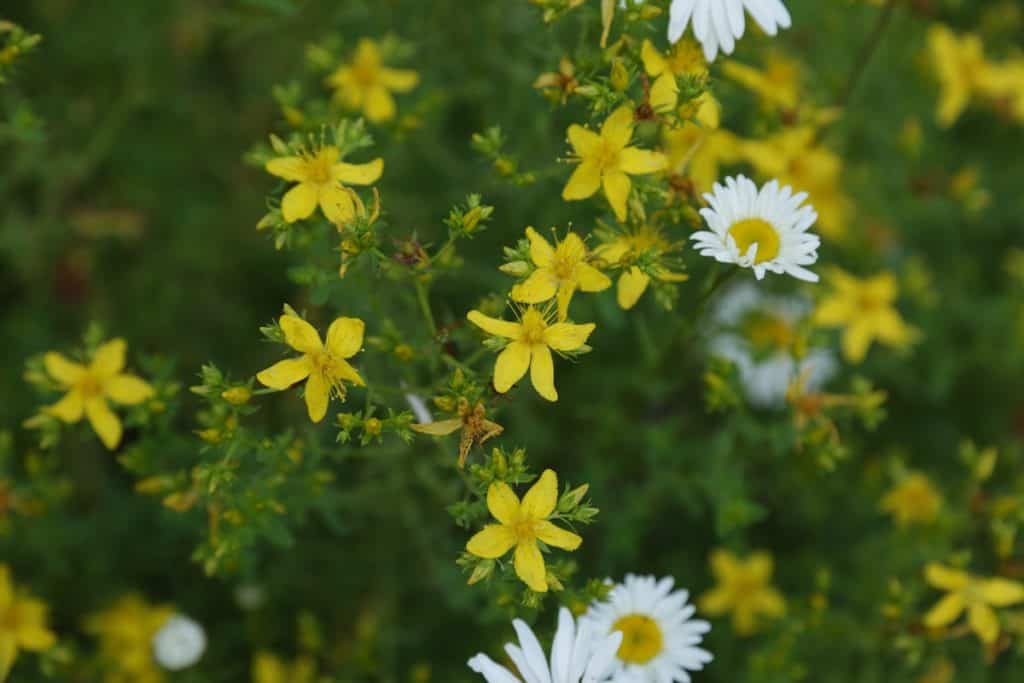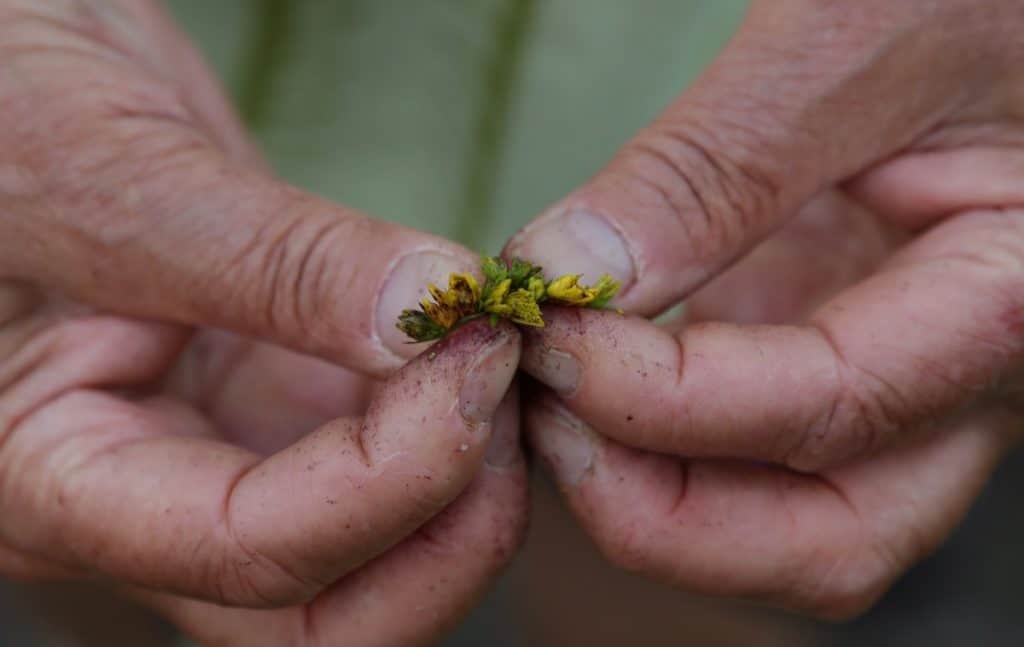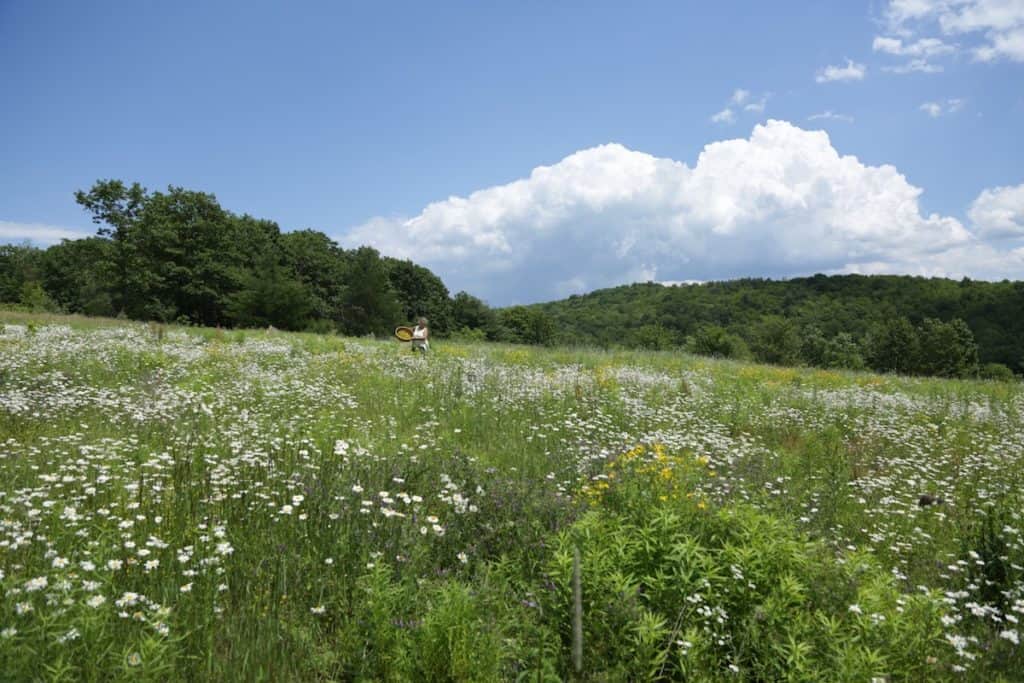Hypericum Perforatum, the Herb of Summer solstice
Got evil spirits in your house? Bothering your family?
No worries, head outside to your nearest field, find some St. Johnswort and hang it on your door! Winter blues got your down? Got nerve inflammation? Bruises? Well you’re in luck because this beautiful flower is in full bloom right now and can be used for all of these ailments.
The Greek root, Hypericum, means to “overcome an apparition”. It was believed Hypericum was so obnoxious to evil spirits, a whiff would cause them to fly away, so folks would hang the dried herb on their doors to keep the evil spirits away.
The common name St. Johnswort comes from the Catholic holiday, St. John’s day, which falls on June 24th. It was designated this day to replace the pagan holiday on June 21, the summer solstice. I secretly call St. Johnswort “Queen of summer”.
Hypericum is a bright yellow, five-petaled flower standing 1-3 ft. high. You can find it dotting the fields from late June into July. Branches are opposite and the rounded leaves are elongated and have a characteristic perforated look (thus the name perforatum). I remember my teacher, Rosemary Gladstar, taking us on a walk and holding the little leaf up to the light to see the “holes”. She smiled and said, “You may have to hold the leaf up to the light a thousand times before you see the fairies.” I might not quite be up to 1000 yet and I’m still looking. Even though they look like holes, they are not actually holes but resin glands housing the constituent, hypericin (Hypericin is also in the bud and flower).
We make infused oil from fresh plant material because it is the only way to get the hypericin and the bright red oil. (Not all herbs need to be extracted fresh). The darker the infused oil, the more of the hypericin and its derivatives have been extracted out and the stronger the medicine.
Traditionally Hypericum was used internally to treat the nervous system in situations of excitability, anxiety spinal injuries neuralgia, sciatica and rheumatism. Topically it was used to treat wounds, ulcers, burns, swelling, and bruises.
Currently it is being used internally to treat, circadian rhythm associate sleep disorder, mild depression, Seasonal Affective Disorder and as an anti-viral for enveloped viral infections (Epstein-Barr, Herpes, Hepatitis B & C, HIV, and Influenza viruses).
We will stick to topical use and medicine in this article.
Hypericium is my go-to-herb for any type of skin/soft tissue damage and nerve tissue inflammation. Sciatica, Thoracic Outlet Syndrome, Bell’s palsy, Carpal Tunnel Syndrome, inflamed discs and recovery from an injury or surgery with nerve involvement all benefit from topical application of Hypericum. This time of year I make at least a gallon of the oil to use throughout the year.
Here’s how to make the medicine.
For our purposes we will make a traditional infused oil. Most herbalists use organic olive oil to make their oil-infused medicines. Any of your favorite organic massage oils will do the extraction. We use the oil and the heat of the sun to extract the constituents we need from the plant.
The first step is to find some good and healthy Hypericum. Please be mindful of where you harvest. Is it living in a healthy environment? Are there pesticides sprayed or are their other environmental toxins to consider? Please also be mindful of the health of the plant population itself so it may continue to thrive. With this in mind, we never take more than 10-25% of any plant material from an area. (You may have another agreement with your garden plants, but this percentage is for a wild harvest.).
When you’ve found your healthy field and are ready to harvest, you’re looking to harvest mostly flowers and buds with up to 25% leaf (remember the leaf is filled with resin glands along with the flowers and buds). Wander plant to plant with your scissors and your thanksgiving and harvest no more than 25%. You may notice when you’re done harvesting your fingertips are stained purple. That’s the Hypericin!

Next completely cover with the oil. If you fill the jar with flowers without seriously packing them in you will be able to completely cover the flowers with the oil. You want to end up with a jar of flowers, covered with oil and no plant material sticking out of the oil. Cover your jar, place in a sunny spot and “shake & pray” every day for 3-6 weeks.
At the end of the time period you should have a nice deep red jar of oil. Bring it inside and strain out the plant material. The used plant material goes in the compost. I like to then let the oil sit over night so any remaining water and “sludge” can settle to the bottom. The next day carefully restrain through cheesecloth and leave the sludge at the bottom as to have a nice jar of oil without the sludge. You can add some vitamin E oil at this point to help preserve the oil. Place in a cool dark place and use when needed. Herbal infused oils have a shelf life of whatever the oil you used. Usually a year, which is perfect because then you get to make it all over again next year!
Good luck & get outside & find your Queen of the summer.



